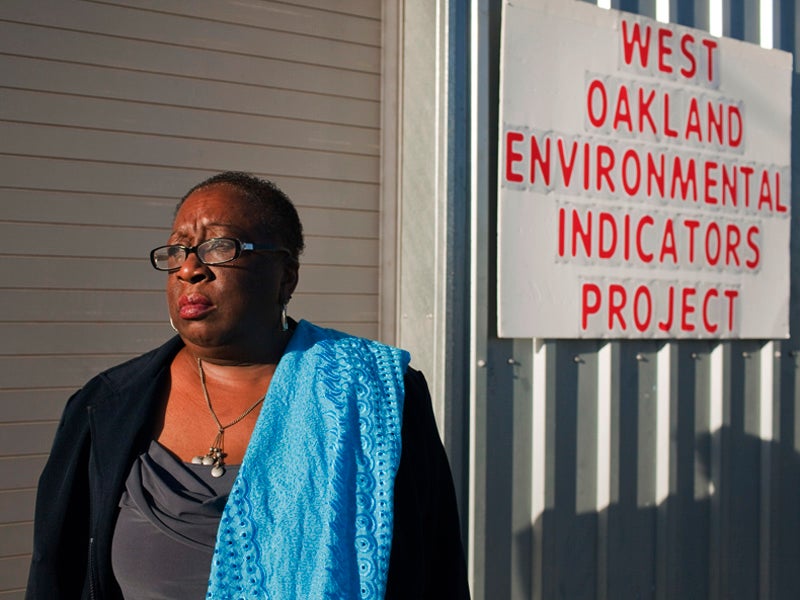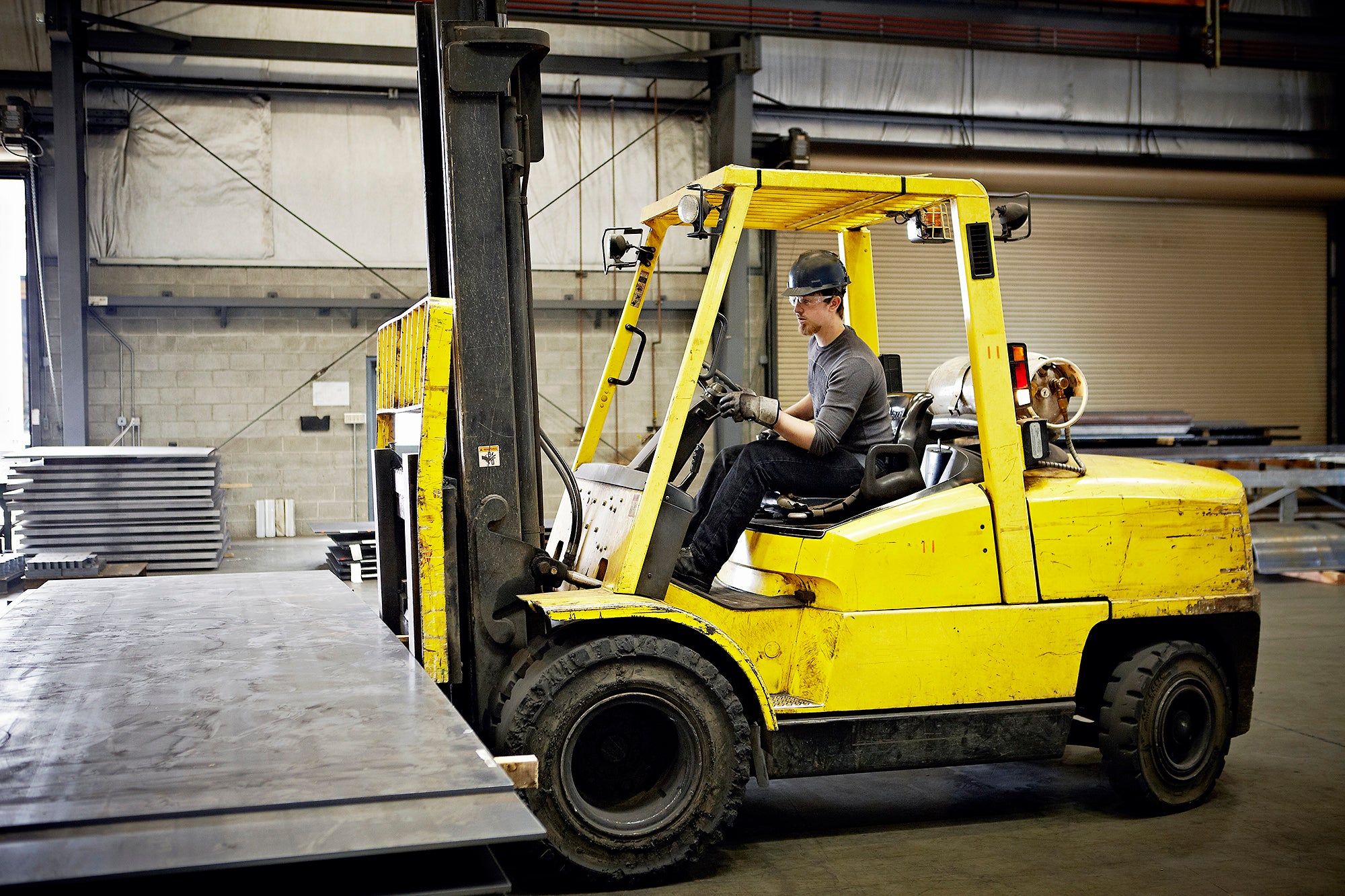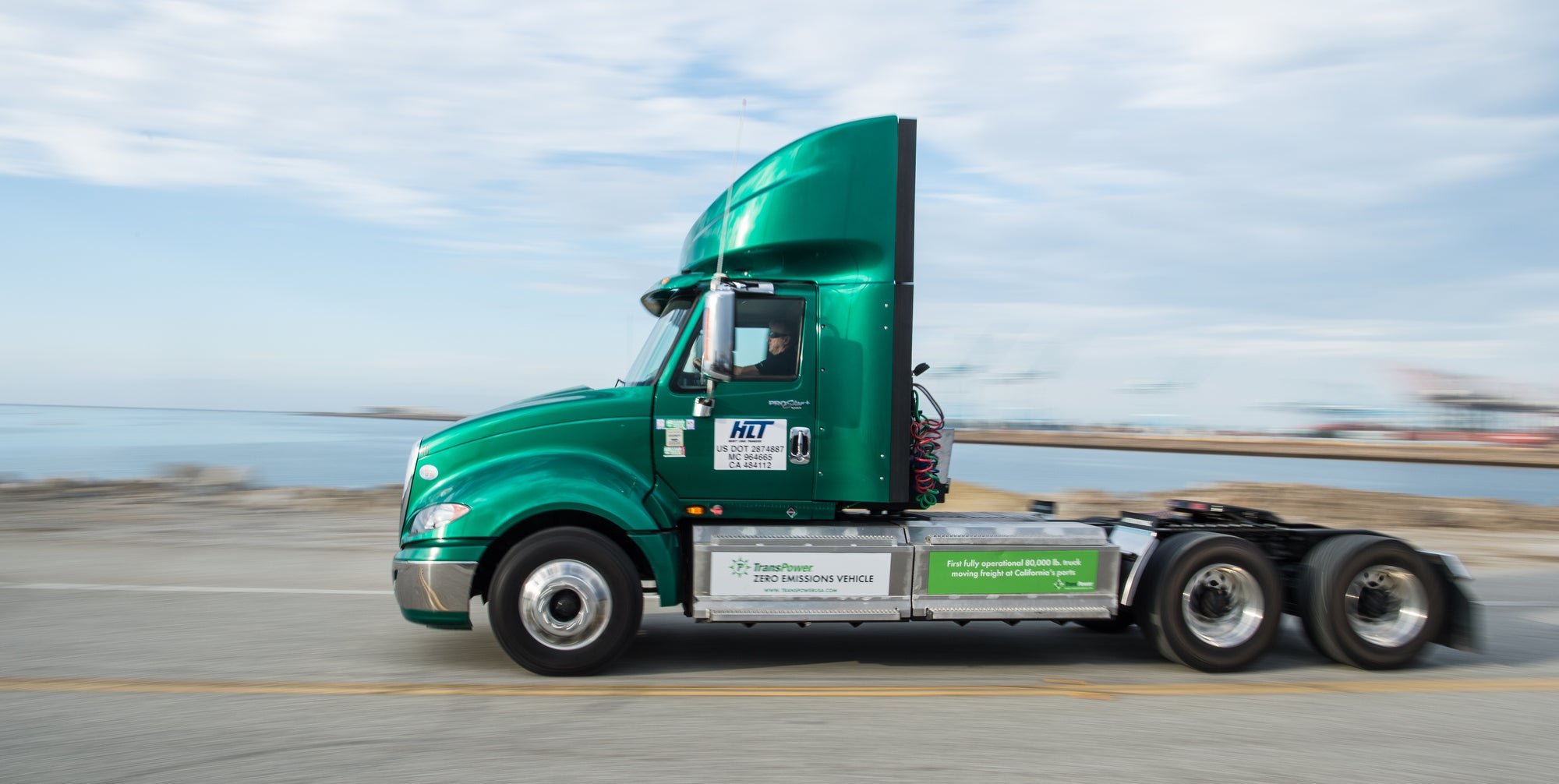Port of Oakland’s All-Electric Future is in Reach
Latest survey finds companies operating at the Port of Oakland are clamoring for all-electric equipment.
The Port of Oakland is the ninth busiest container port in the country, with ships transporting everything from electronics, furniture, and machinery to edible foods and beverages. This hum of activity makes the Bay Area port responsible for loading and unloading a whopping 99% of all of the containerized products that move through Northern California, totaling $40 billion of goods annually.

A container ship docked at the Port of Oakland in California. (Cavan Images / Getty Images)
But this economic engine is also delivering harmful air pollution to communities that live near the sprawling port complex. When giant container ships approach the Port, they spew a toxic cocktail of pollutants into the air. Heavy-duty trucks transporting cargo from ships rumble through neighborhoods in West Oakland out to warehouses in the Central Valley, emitting large amounts of diesel exhaust. And diesel-powered port equipment like yard trucks and cranes (commonly referred to as “cargo handling equipment”) that transport containers on and off ships and move goods around the Port are also driving the region’s air quality crisis.

Margaret Gordon, co-founder of the West Oakland Environmental Indicators Project. (Photo courtesy of Margaret Gordon)
Research from the Environmental Defense Fund found troubling disparities in air pollution across the Bay Area, revealing that frontline communities living near the Port of Oakland are grappling with the highest concentration of air pollution. West Oakland, a 6.5-square-mile neighborhood that sits between the Port and four different freeways, has long been hit hard. The West Oakland community, where more than 70% of the population is people of color, lives with higher concentrations of smog and cancer-causing diesel pollution than wealthier and whiter neighborhoods like the nearby Berkeley Hills or Alameda, and this pollution is taking a disturbing toll on people’s health.
The average lifespan of a West Oakland resident is 6.6 years shorter than someone living in Alameda.
Tackling the Problem
To get a handle on this pollution, in March 2023, after years of advocacy and mounting pressure from groups including Earthjustice, West Oakland Environmental Indicators Project, and other partners, the Port of Oakland’s Board of Commissioners adopted a first-in-the-nation environmental ordinance requiring that the Port’s tenants — shipping and logistics companies operating on the Oakland Harbor — produce a written inventory of all the cargo handling equipment they use on the Port’s property. The ordinance also requires tenants to develop a plan showing how they will convert the equipment to zero or near-zero emissions. The environmental ordinance is a major step for Oakland and an important tool in the fight for zero-emissions because it requires port tenants themselves to participate in the planning process.
The results from the inventory are now in, and they’re extremely promising. All 16 of the tenants operating out of the Port of Oakland have completed their plans and, after reviewing the submissions, our team found that the industry is clamoring for battery-electric options. Right now, only 21 pieces of cargo handling equipment at the Port are all-electric, but of the 574 pieces of cargo handling equipment used at the Port, tenants intend to convert 246 to battery electric, marking a dramatic uptick from the business-as-usual approach. This encouraging news provides critical evidence that it’s time for the Port, together with its tenants, to go all in on all-electric cargo handling equipment, and it’s clearer than ever that Port leaders must now turn to adopting a comprehensive electrification plan that includes battery charging, and electricity distribution system and energy storage investments that will help tenants adopt this new technology.

A forklift is used to move sheets of steel from a stack. (Thomas Barwick / Getty Images)
Putting Federal Dollars to Work Locally
Plus, there are now more state and federal dollars flowing to make these changes possible. Last month the Biden Administration announced it will provide $3 billion to ports across the country, ushering in a new wave of zero-emissions trucks, cargo-handling equipment, and charging infrastructure. The Port of Oakland will receive a whopping $322 million — one of the largest awards in the nation — to make these upgrades. In the face of an incoming Trump administration, it is urgent for the Environmental Protection Agency to quickly distribute this funding.

Electric heavy duty truck from TransPower used to move freight at the Long Beach Port in California. (Dennis Schroeder / NREL)
Speeding up the pace of the zero-emissions transition at Oakland will go a long way toward addressing disturbing rates of air pollution in the region, which local communities have seen spike to the 90th percentile for diesel pollution in the state, making places like West Oakland asthma hotspots. With this promising environmental ordinance, Oakland is demonstrating that there is enthusiastic support for transitioning to the large number of zero-emissions cargo handling equipment solutions that are commercially available today.
Right now, no other port in California has an equivalent environmental ordinance to facilitate the transition to battery-electric port equipment at scale, despite evidence that industry is interested in making the switch.
In other words, cargo handling equipment is ripe for electrification, tenants and operators want to do their part, and there’s now significant federal funding flowing to support this transition. We know the future is electric, so it’s time for more ports to plan for it.
The California Regional Office fights for the rights of all to a healthy environment regardless of where in the state they live; we fight to protect the magnificent natural spaces and wildlife found in California; and we fight to transition California to a zero-emissions future where cars, trucks, buildings, and power plants run on clean energy, not fossil fuels.
